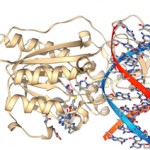TPH cells are also unique in that they express chemokine receptors, such as CCR2, CXCR1 and CCR5, which direct migration to inflamed sites. Thus, the newly identified T cell population is able to infiltrate parts of the body that are inflamed and stimulate B cells to produce antibodies. In particular, the investigators found that PD-1hiCXCR5–CD4+ T cells that had been sorted from the synovial tissue or fluid of patients with RA could induce differentiation of co-cultured memory B cells into plasma cells. In contrast, CXCR5– cells that did not have high PD-1 expression could not stimulate a B cell response.
The fact that TPH cells are uniquely enriched in seropositive RA implies that they are critical for the T cell-B cell interactions that are characteristic of seropositive disease. “Our results help illuminate a path toward treatment that is much more precise and focused only on the most relevant immune cells,” said Dr. Rao in a press release.
To that end, the investigators intend to focus their future research on developing a better understanding of the signals required to develop TPH cells, as well as the role these cells may play in other autoimmune diseases. Such studies may reveal whether the presence of TPH cells may be a useful diagnostic biomarker or, alternatively, a predictive biomarker that can be used to identify which patients are most likely to respond to therapies, such as rituximab, that directly target T cell-B cell interactions.
“This work is a remarkable illustration of the power of our disease deconstruction approach,” says senior author Michael B. Brenner, MD, who also directs BWH’s Human Immunology Center with Dr. Rao, in a press release. “We hope it will prove equally illuminating as we apply it to other immune-mediated diseases.”
Lara C. Pullen, PhD, is a medical writer based in the Chicago area.
Reference
- Rao DA, Gurish MF, Marshall JL, et al. Pathologically expanded peripheral T helper cell subset drives B cells in rheumatoid arthritis. Nature. 2017 Feb 1;542(7639):110–114. doi: 10.1038/nature20810.

